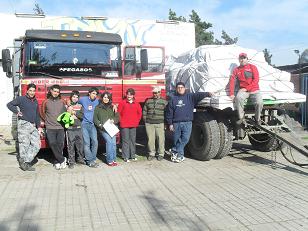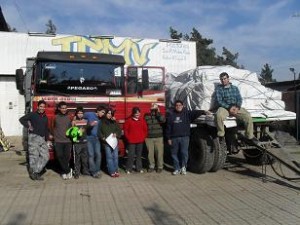
Once the truck picks up the container from our warehouse, most of the “GEMS” people here in Canada take a quick moment to catch their breath before work begins on the next container. But, halfway around the world, others are getting ready to go to work.
GEMS works with carefully screened agents and partners to distribute the much needed aid our Canadian partners and volunteers donate, collect and send. For our overseas workers, probably the most rewarding part of their job is to actually hand the goods to the people who desperately need them. The joy on the faces and the stories that are told can bring tears even to our eyes back in Canada.
Before the goods can be distributed in the destination country, however, there is the thankless and often tedious job that we often forget — meeting the local import and customs regulations. While GEMS prepares the shipping documents necessary for each destination and ensures that everything is in order, the process on the other end can be frustrating as this translated report shows:
In this first stage of the project, there was a moment of difficulty & incertitude… [We made] several visits to offices [at the port city] and in [the capital], where, during the first few days, they could offer no solution, seeing that for the customs office, it was a big, inconvenient procedure to take charge of a container without fumigating it.
Finally, we met someone who explained what we should do… this time with clear & precise directions.
One of the steps we took was to correct the Bill Of Lading, since the container had changed boats and this document had some incorrect information. Then, we had to contact the shipping company for them to take charge of the container and to do whatever was needed to have it fumigated before turning it over to us.
We freed the container from the Port and had it taken to the company where it was “de-consolidated” (emptied of all that wouldn’t need to be fumigated). After that, we had to find a fumigation business since the shipping company did not do fumigation –- they were authorized only as a primary security zone to hold the container and look after de-consolidation and consolidation. We contacted the company & arranged for the fumigation and asked the office of Agrículture & Cattle Services to check the container and duly confer a certificate of fumigation.
Since we were carrying dried soups, we had to visit the national health service and have them check the container and issue a document certifying that the foods had neither expired nor decomposed.
When this was done, we were able to put everything back into the container and then to seal it. These documents allowed us to go to Customs for permission for the container to leave the primary security zone.We took the customs pass to the shipping company, which released the container to a truck, which transported it the three hours to our compound.
It was not possible to have the container delivered to the region of need, so a group of men emptied the container so we could then repack its contents onto other trucks for delivery to our needy citizens.
0 Comment

Leave a Reply